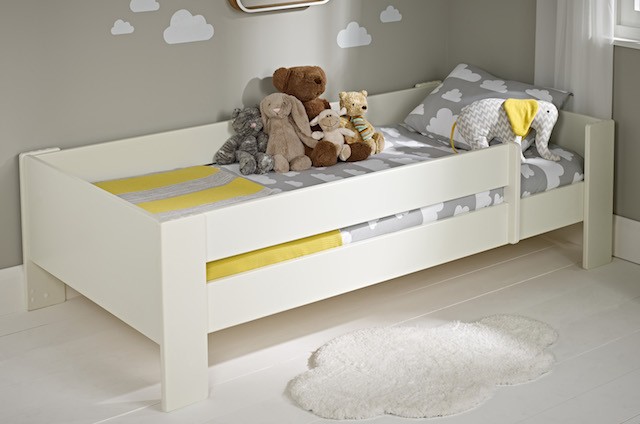
It’s very common for new babies to sleep in the same room as their parents. Some parents like to room share, keeping the cot close by to their own bed to make night feeds a little easier. Whereas other parents may prefer co-sleeping. Ultimately, it’s up to parents to work out what works best for them.
The time will eventually come to reclaim your bedroom space and transition the little one into their own bedroom for the night. Whether this time comes at six months old, or later into their toddler years, encouraging independent sleeping can be a daunting challenge. Getting into a settled routine can take anything from a few days to several months.
Here are some top tips to help speed up the process and make the move as stress free as possible:
Take baby steps
When you’re ready to make the transition, take it slowly. If you co-sleep, transition your little one into a cot beside your bed, and gradually move it further and further away over the space of a few weeks. If you share a room with your child, apply the same principles. Gradually moving their cot away from you will help them to adjust from sleeping in such proximity to you. Once accustomed to this, you may then want to look towards the big move.
Your child’s bedroom is unknown territory to them and whether they are six months or two years old, it is important to introduce them gently to this new environment. Spend some time reading a book in there each day, emphasise this is their room and let them explore and play in the room and the bed itself.
Begin with naps
It is very wise to begin getting your baby or tot familiar with their new bed by beginning with nap times in their room. Talk to them and comfort them as you put them to bed so that they know it’s okay to be sleeping there. Nap times in your child’s bed should aid with the transition and reduce the stress on both parent and child. Once settled, sleeping in that same bed at night will be more of a natural progression.
Don’t begin the move with an unwell or teething child
If your child is unwell or teething, be patient. They may already be suffering from disturbed sleep and moving them into their own room will cause further stress. Timing is crucial for a smooth and stress-free transition and remember there is no rush.
Persevere and be brave
Babies and toddlers are full of emotion. Your child may cry, but as long as you are active and responsive in checking they are okay, letting them cry is doing no harm. In the first couple of weeks, reassure them you’re not far away. You may wish to sit with them to begin with, until they settle easier. Children’s bunk beds from Room to Grow can be an ideal solution if you’re nervous about leaving your little one to sleep alone; add a safety rail to the low bottom bunk and rest on the top bunk as they drift off to sleep. Alternatively, many bunk beds can be separated into two singles that you can place at opposite ends of the room and rest here as they settle; your presence should be reassuring.
Once your child has had a good run of settling while you’re sat with them in their own room, give them a chance in sleep independently. There may be tears; you don’t have to let them cry for hours and can reassure them but do allow them to nod off independently as it is an important skill to learn.